
How to Use Yahini's Content Strategy Framework to Drive Business Growth

Content Strategist
Most content writers begin writing when they get the simplest instructions. This is concerning because it results in misalignment between the content managers, writers, and editors.
Here’s why this happens: a lack of a solid framework for content strategy and research. Building a content marketing strategy framework from scratch is hard because there’s so much information out there on how to do it, and different people try different things until nothing ultimately sticks. This often leads to subpar content performance.
In this article, I’m going to take you through the content strategy framework we use at Yahini – from identifying key content topics to mapping content to the marketing funnel.
Table of Contents
Yahini's content strategy framework - A Step by step guide
This step-by-step framework is our team's exact methodology when creating content for Yahini. But it's also the process Yahini uses to generate personalized content strategies for your business. This forms the basis of a successful content strategy.
Step 1: Set Clear Content Goals
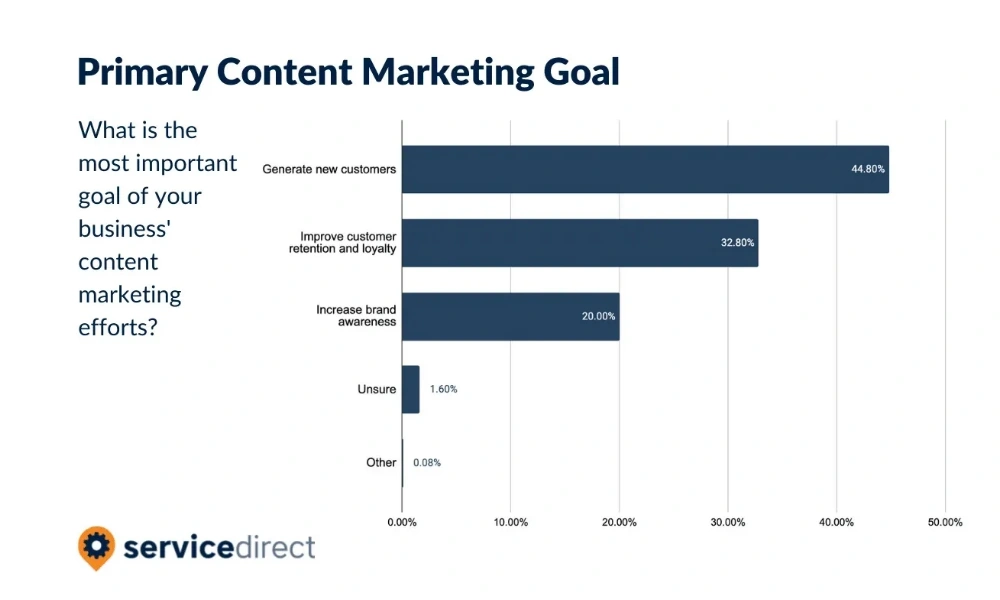
You know that old saying - "If you don't know where you're going, any road will take you there." Well, the same applies to your content strategy. You need a clear destination in mind from the get-go.
What exactly are you trying to achieve with your content? Getting more eyeballs on your website is a start, but it's not a complete goal. Your content marketing efforts should have clear key performance indicators (KPIs).
Are you looking to boost brand awareness?
Generate more qualified leads?
Drive product sales and improve conversion rates?
Get crystal clear on your objectives from the jump. They must be specific, measurable, achievable, relevant, and time-bound (SMART).
For example: "Increase organic traffic from our target buyer personas by 25% over the next 6 months." That's a goal you can actually plan and optimize for.
But your goals shouldn't just live in a vacuum. They must be tied directly to your overall business goals and bottom line. If your content isn't contributing to real business growth, you're just creating content for content's sake. And what's the point of that?
This is also the stage where you need to really dig into your target audience. Who are they, what are their pain points and interests, how do they search and consume content? You need to understand your ideal customer.
The more intimately you understand your audience, the better you can create material that resonates.
Step 2: Conduct Thorough Keyword Research

Okay, goals and audience defined. Now it's time to find the keywords you want to focus your content efforts on. This will inform your content marketing plan.
This is where your favorite keyword research tools come into play.
Sky-high search volume keywords drive tons of traffic. But that traffic is also going to be incredibly broad and top-of-funnel. The real money is in those long-tail, buyer-intent keywords that attract warm prospects closer to making a purchase decision.
Look at search trends and seasonality. There could be windows of opportunity to create timely content that capitalizes on short-term demand spikes.
For example, if you're a tax software company, you'd better have fresh content ready to go every year in March and April when everyone is scrambling to file.
Here at Yahini, we've built our own advanced keyword research tool right into the platform. Our AI-powered system analyzes your existing content, your competitors' content, and broader search data to surface the most relevant and valuable keywords for your specific business.
Yahini doesn’t show you a list of 10000s keywords. It actually automatically prioritizes them based on factors like relevance, search volume, competition levels, and potential impact. That way you can cut through the noise and focus your efforts on the content topics that will actually move the needle.
Step 3: Develop Keyword Clusters
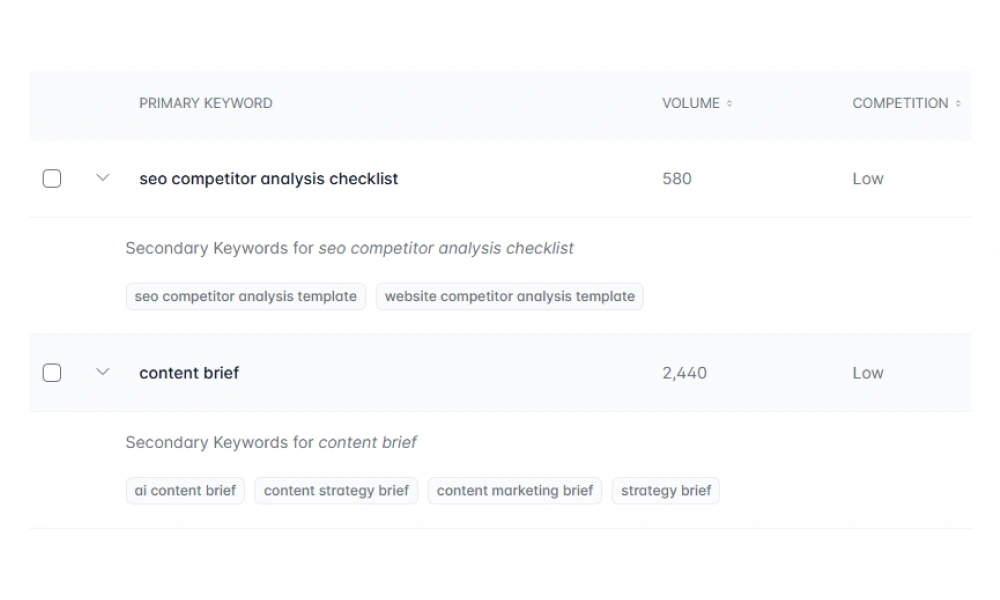
An effective content strategy requires taking a more granular approach by grouping related keywords into clusters.
The goal is to create authoritative content hubs that fully satisfy searcher intent from every angle. Rather than creating one-off articles, you're building out a rich library of content assets all mapped to the same core topic.
However, trying to organize and map out these content hubs manually takes 5+ hours, and that’s if you know your niche well enough.
Yahini’s AI automatically groups relevant keywords into logical clusters based on topics and search intent. From there, it surfaces the highest-impact, most valuable clusters based on your specific business, products/services, competitors, and target audience. You get a clear roadmap of which core topics to focus your content efforts on for maximum impact.
And we take it a step further by analyzing each keyword's relationship to the marketing funnel.
Not all keywords are created equal - some are more top-of-funnel, while others indicate higher buyer intent. Yahini automatically categorizes each keyword based on the funnel stage, so you can easily create a balanced content plan.
Step 4: Analyze Your Competition
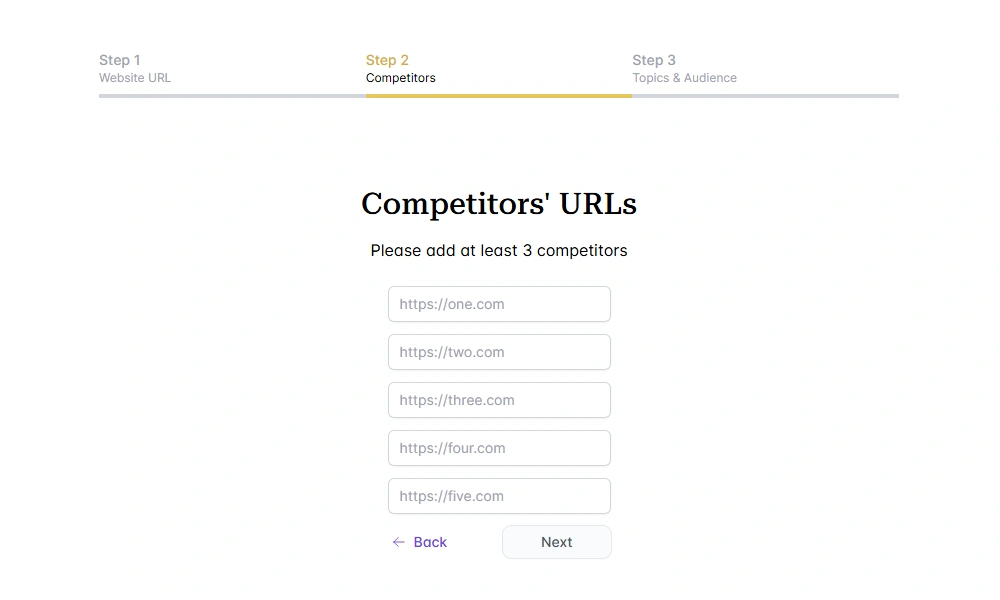
You can't create a winning content strategy in a vacuum. Understanding what your top competitors are doing and where the gaps lie is super important. A regular content audit of competitor sites can reveal many content ideas.
Start by identifying your main competitors for the topics/keywords you want to target. Tools like Ahrefs and SEMrush can show you who's ranking on the first page for those terms.
From there, do an analysis of their content - what types of content are they using (blog posts, videos, white papers, etc.)? What's their editorial approach and messaging? Which pieces are getting the most traction and engagement?
It's also worth looking at their backlink profiles to understand what sites link to them. This can surface content partnership opportunities down the road.
Step 5: Align Content with the Buyer's Journey
Here's the thing about content - not every content piece can or should serve the same purpose. An effective strategy requires developing different content assets mapped to each stage of the buyer's journey.
For those just starting their research (the awareness stage), you'll want more top-of-funnel content like educational blog posts, beginner's guides, and other resources to address their initial pain points and pique their interest.
As prospects move into the consideration stage, you'll need more middle-of-funnel assets like case studies, product comparisons, expert interviews, and other thought leadership content that helps them evaluate their options.
Then, for those hot leads entering the decision stage, you need bottom-funnel content like comparison pieces, alternative product lists, and other assets that provide that final nudge toward purchasing.
At Yahini, our entire platform is built around this concept of balanced funnel allocation. We have AI models trained to automatically categorize keywords based on funnel stage. Then as you build out your content plan, you’ll have a healthy mix of assets targeting each stage of the journey.
Step 6: Audience Research and Persona Development
You simply can't create high-converting content without developing a deep, intrinsic understanding of your target audience.
On the surface, demographics and psychographics are important. But you need to go even deeper - what are their core pain points, fears, desires? How do they consume content and make purchasing decisions?
The best way to uncover these insights is through methods like customer interviews, surveys, social listening on social media platforms, analyzing customer support tickets, and poring over third-party research reports. Your sales teams can also provide valuable feedback.
From there, the next step is to actually develop fleshed-out buyer personas.
These semi-fictional representations bring your audience to life and turn them from statistics into actual people with real wants and needs.
Step 7: Content Mapping and Planning
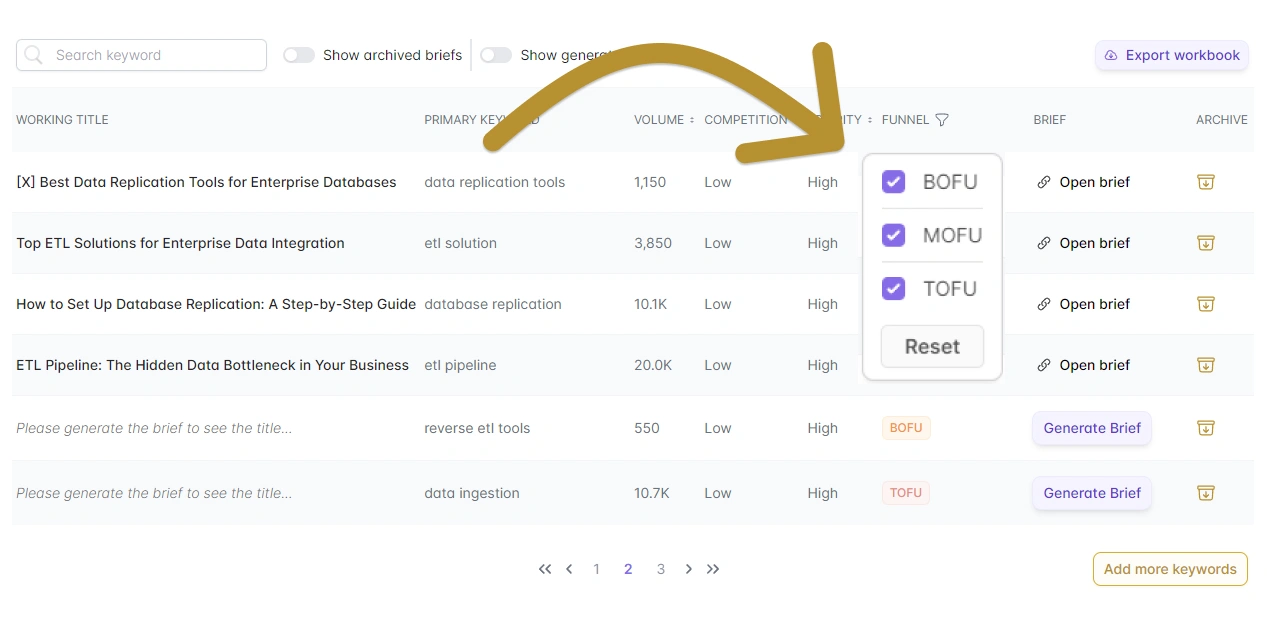
With your keyword clusters defined and your audience fully mapped out, you can now start planning and mapping out your entire content marketing strategy and asset pipeline.
The first step is mapping each piece of content to a specific stage of the buyer's journey and the sales funnel. This ensures you have enough top/middle/bottom funnel content, and that everything ties together into a cohesive experience that guides the buyer through their journey.
From there, you'll want to develop an actual content calendar or editorial calendar that maps out which assets will be created, when they'll be published, and on which channels they'll be distributed. This allows you to maintain a consistent publishing cadence, which is key for building topical authority and mindshare.
At Yahini, we take the pain out of this process with our built-in content workbook functionality. As you select your target keywords, we automatically build out a workbook mapping everything—from keyword targeting and metadata to content briefs.
Step 8: Build your Content Briefs
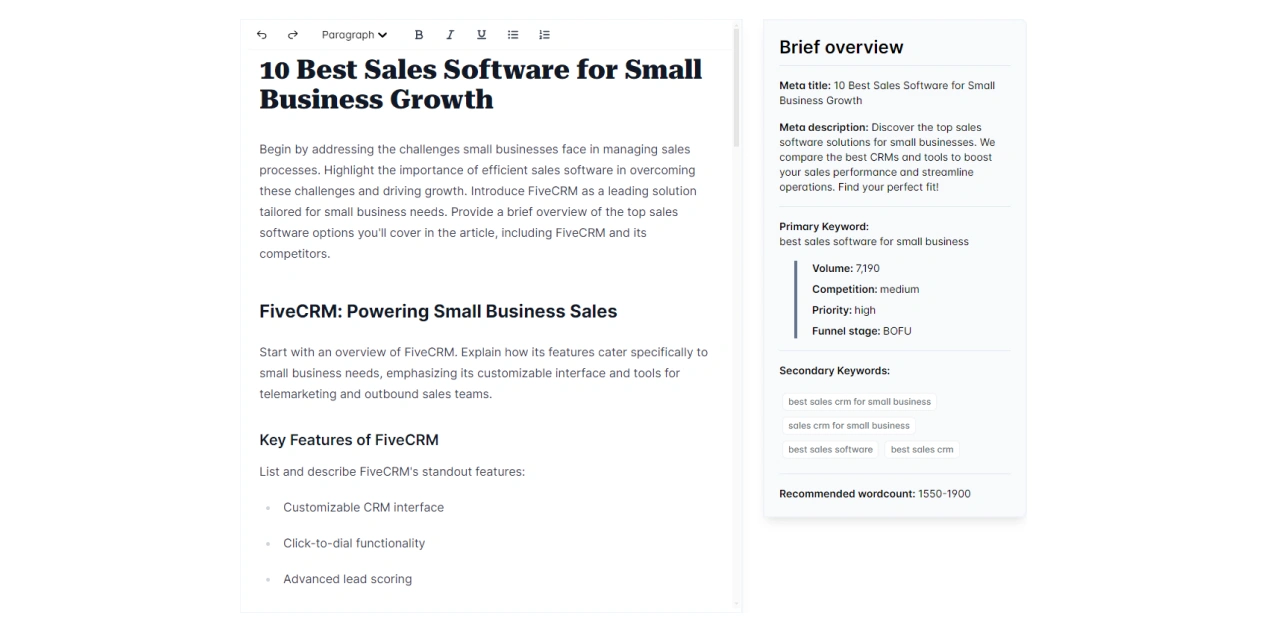
Now it's time for the hard part - creating all those separate content assets and making sure they meet your standards. This is a crucial part of the content creation process.
This is where content briefs become your not-so-secret weapon. Rather than having writers go in blind and potentially miss the mark, briefs lay out the specific requirements and strategic considerations for each piece of content. Things like:
- The target keyword and funnel stage;
- The overall topic and angle;
- The desired structure and content format;
- Specific points, questions, and themes to cover;
- Stylistic and tone guidelines;
- Optimization and on-page SEO considerations.
You can certainly build these briefs out manually. But doing it at scale while maintaining quality and consistency is a huge challenge. You can use Yahini for this.
Yahini's AI models are trained by actual content strategists on the art and science of crafting high-impact briefs. It automatically generates comprehensive briefs customized for each funnel stage and type of content.
For example, let's say you're targeting the keyword "project management tools" which Yahini has categorized as a bottom-of-funnel term. When you generate the brief, you'll get a fully fleshed-out plan for creating a "Best X for Y" piece.
Yahini will recommend the ideal content structure, talking points to cover, product comparison angles, and more.
Everything you need to create a high-converting asset.
A content strategy built to bring results
There you have it - the exact same framework our content team follows to create Yahini's industry-leading content, ensuring we consistently produce high-quality content that provides valuable content to our potential customers and prospective customers. This focus on relevant content helps drive organic traffic and supports our content marketing plan.
The bottom line - you can't just slap together a content strategy and hope for the best. You need a methodical, data-driven approach that accounts for every angle and positions you for success. That's exactly what you get with Yahini.
A strong content strategy is essential for good content marketing ROI and streamlined content production. This approach helps generate more content ideas for various types of content like blog posts, white papers, and other content topics that can be scheduled on your editorial calendar.
Yahini offers you the strategic advice you need to create a content strategy from the ground up. Its AI has been trained by seasoned content strategists, providing you with expert-level content briefs right at your fingertips.
Ditch the generic outlines! Sign up now.
-
Need a 24/7 content strategist? See how Yahini can help you craft perfect content briefs.
-
Any questions? I’m happy to help! Just reach out to us.
-
Not ready yet? Learn more about Yahini here.